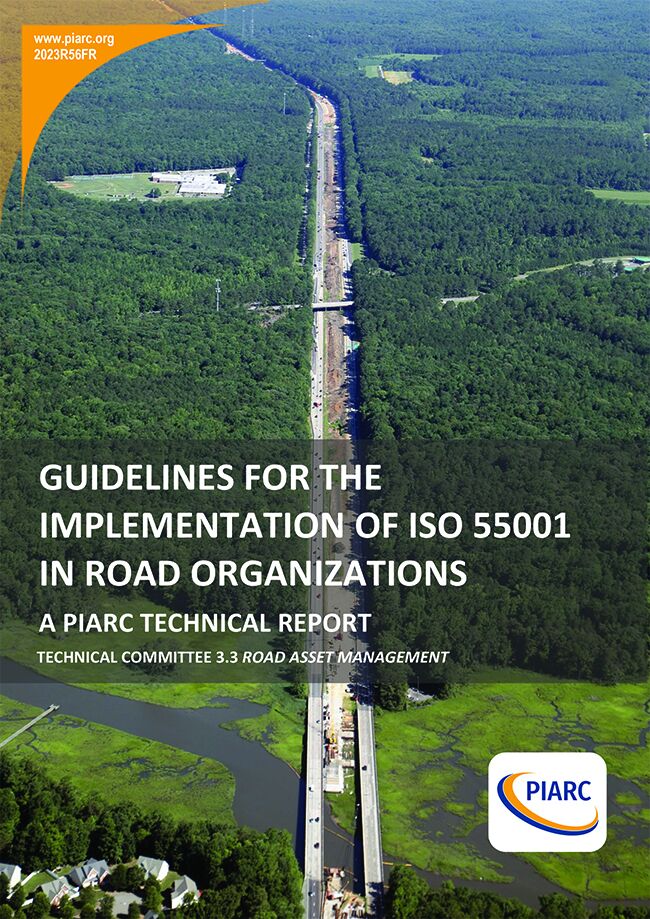Guidelines for the Implementation of ISO 55001 in Road Organizations

“Asset Management” as defined in ISO standards 55001, aims to enable an organization to obtain value from assets. ISO 55001 offers a structured approach to asset management by focusing on implementation of “risk-based, information-driven, planning and decision-making processes and activities that transform organizational objectives into asset management plans”. To obtain the highest profitability and perform the best possible management of an asset throughout its useful life, from its construction to its disposal, it is necessary to follow a life cycle plan.
The content of this document reflects the work carried out during the cycle 2020-2023 by Technical Committee 3.3. Road Asset Management, specifically by Working Group No. 1 ("Innovative approaches in the management of road assets").
The objective was to produce some guidelines that would give different organizations access to good practice and recommended approaches regarding the implementation of the ISO 55001 "Asset Management" standard in the road sector. The value of these guidelines is clear: with some practical guidelines it can be easier to implement this quality mark in road organizations.
The document starts by describing the special characteristics and the state of art in asset management in the highway sector. It continues with a section describing the content and key features of the ISO 55000, ISO 55001 and ISO 55002 standards. Following this, Chapter 4 addresses the benefits of implementing ISO 55001 in road organizations and highlights the drawbacks, risks, etc.
Chapter 5 contains a detailed survey. Questions were prepared to obtain the maximum information from different organizations specifically dedicated to the management of road assets. The results are shown for federal, regional and local administrations, as well as public or public-private partnerships (PPP) management models for road networks. It also contains a specific section of questions dedicated to those organizations that have already been certified in ISO 55001.
Chapter 6 includes a section of case studies. Ten organizations have been selected, with different maturity levels in asset management. They were interviewed (online in most cases) with the goal of obtaining valuable information about their expectations, experiences, resources, and difficulties on the journey of road asset management.
Finally, in chapter 7 the reader can find the conclusions from all the information previously described and some relevant factors to be considered in the journey to ISO 55001.
The complete results of the survey are gathered in Appendix I. Appendix II contains all the information from the interviews used for the case studies.
Information sheet
- Date: 2025
- Author(s): Comité technique / Technical Committee / Comité Técnico 2020-2023 3.3 Gestion du patrimoine routier / Asset Management / Gestión de activos viales
- Domain(s): Road Assets Management
- Type: 2023R56EN - PIARC Technical Report
- PIARC Ref.: 2023R56EN
- ISBN: 978-2-84060-778-6
- Number of pages: 123